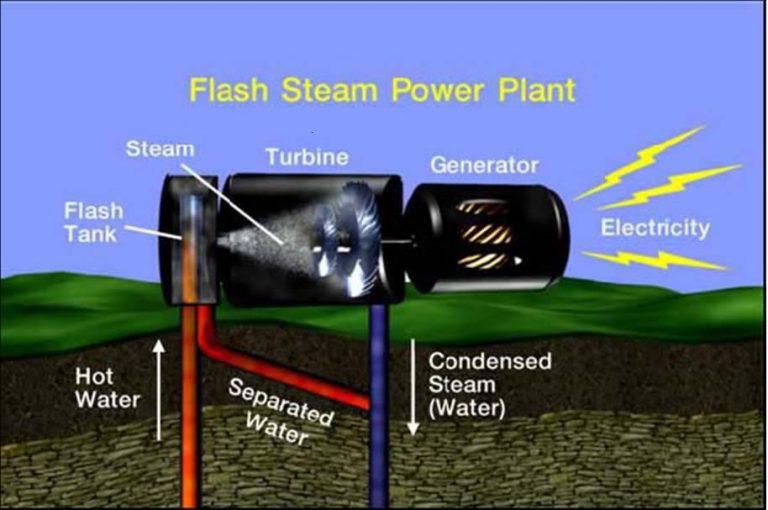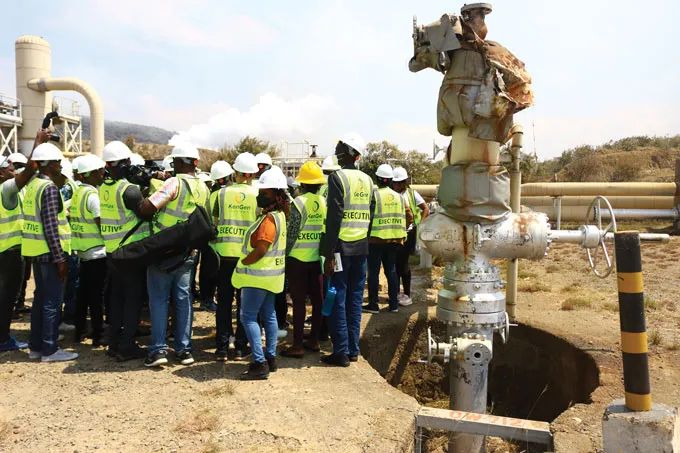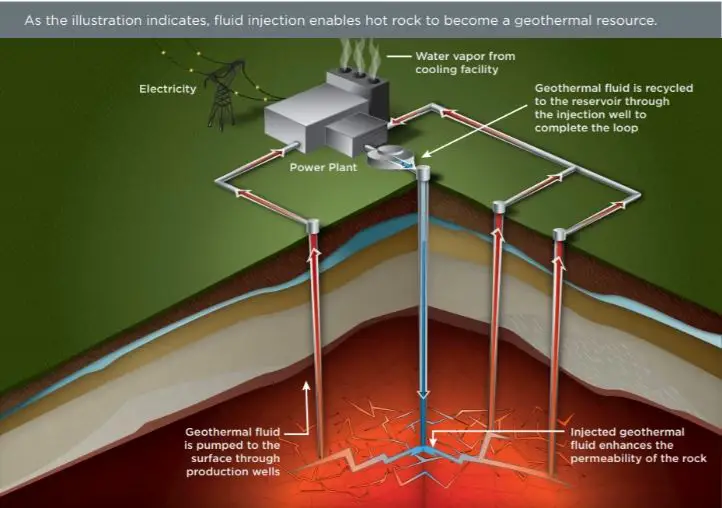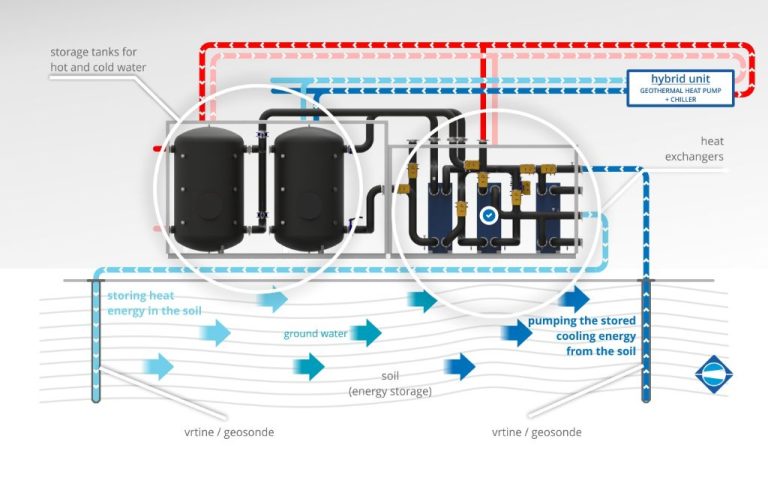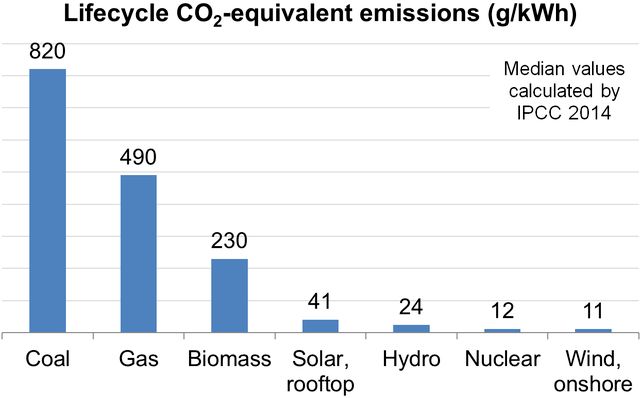Geothermal Sustainability: Navigating Complexities For A Greener Future
Geothermal energy is thermal energy generated and stored in the Earth. It is a clean, renewable source of energy that utilizes the Earth’s natural heat from underground reservoirs of hot water or steam. Geothermal energy has an important role to play in transitioning to a more sustainable energy future as countries seek to reduce their reliance on fossil fuels.
Geothermal resources provide consistent baseload power that is not subject to fluctuations based on weather patterns like solar and wind power. The steam and hot water from geothermal reservoirs can be tapped to generate electricity, provide direct heating, or be used for a variety of industrial purposes. Geothermal energy has a small land footprint, emits little to no greenhouse gases, and does not generate air or water pollution. With many countries setting goals to achieve 100% renewable energy by 2050, geothermal will be a key technology to make this vision a reality.
This article provides an in-depth look at the complexities and opportunities surrounding geothermal energy. We’ll explore the sustainability benefits it offers, as well as the economic and technical challenges that must be addressed to scale up geothermal. The goal is to provide a balanced perspective on how geothermal energy can play a greater role in building a green energy future.
Geothermal Energy Basics
Geothermal energy is heat derived from the natural heat of the earth. It is a renewable energy source that taps into the thermal energy created and stored underneath the earth’s surface. There are three main types of geothermal energy systems:
Direct Use: This method utilizes hot water directly from an underground reservoir. The water is brought up through wells and piped directly for applications like heating buildings, greenhouses, fish farms, and other facilities.
Geothermal Heat Pumps: These systems take advantage of the constant temperatures underground to control building temperatures above ground. Pipes called loops are buried underground to transfer heat between the earth and the building.
Electricity Generation: Deep wells can tap into reservoirs of very hot water and steam to power turbines and generate electricity. This method requires high heat and fluid flow found in rare geothermal reservoirs.
Geothermal Energy Use
Geothermal energy is currently used in over 70 countries worldwide for electricity production and direct heating applications. The leading countries utilizing geothermal power are the United States, Philippines, Indonesia, Turkey and New Zealand.
In the US, geothermal energy generates over 15 billion kilowatt-hours of electricity annually, powering around 1 million homes. California leads domestic geothermal electricity generation, thanks to its location near tectonic plate boundaries. Iceland generates over 25% of its electricity from geothermal sources, the highest share in the world. Direct use applications of geothermal include district heating systems, greenhouse heating, industrial processing, aquaculture and more. Globally, around 70 TWh of thermal energy is extracted and utilized annually for direct heat purposes.
The installed global geothermal generation capacity is over 15 GW. With some estimates projecting a doubling of geothermal utilization by 2026. Enhanced geothermal systems and co-production from oil and gas wells are emerging technologies that could greatly expand viable geothermal resources and installed capacity.
Benefits of Geothermal
Geothermal energy offers several major benefits that make it an attractive renewable energy source. First and foremost is that it is renewable – geothermal energy is produced by harnessing the natural heat within the earth, which is constantly being replenished. This means geothermal power plants can operate indefinitely, unlike fossil fuel plants that rely on finite resources.
Geothermal systems also produce near-zero greenhouse gas emissions. Unlike burning coal, oil, and natural gas, geothermal plants release minimal carbon dioxide or other pollutants into the atmosphere. This makes geothermal a clean, emission-free energy source and an important tool for reducing the impacts of climate change. According to the U.S. Environmental Protection Agency, geothermal power plants emit on average less than 5% of the carbon dioxide of a conventional coal-fired plant.
The development of geothermal energy also reduces reliance on fossil fuels and imported fuels. Tapping into the earth’s internal heat can provide a stable baseload power supply without needing to extract and burn hydrocarbon resources. Greater adoption of geothermal, as part of an overall strategy to increase renewable energy generation, supports energy independence and security for many nations.
Challenges of Geothermal
While geothermal energy has many benefits, there are also some significant challenges to overcome for wider adoption. Three main challenges include:
High Upfront Costs
Constructing a geothermal power plant requires significant upfront capital investment. Drilling wells thousands of feet into the earth and building the above-ground power plant infrastructure is expensive. The costs can range from $2-5 million per megawatt of capacity. This is much higher than the capital costs for natural gas or coal plants.
Limited Suitable Locations
Geothermal energy is only feasible in areas with optimal underground heat and fluid resources. These geothermal reservoirs are not ubiquitous. Viable locations are often limited to tectonically active areas like western North America, Iceland, Indonesia, and parts of Africa and South America. This geographic constraint makes geothermal impractical for widespread adoption.
Managing Induced Seismicity
Extracting heat and fluid from underground rock formations can sometimes trigger small earthquakes through a phenomenon called induced seismicity. These minor tremors are an ongoing engineering challenge. Careful monitoring and management of fluid injection and withdrawal helps mitigate seismic risks.
Environmental Impacts
Geothermal energy has several potential environmental impacts that must be carefully managed. These include effects on land use, water use, air emissions, and induced seismicity.
Land use impacts arise from the construction of geothermal plants and drilling of geothermal wells. Power plant facilities and pipelines can disrupt habitats and landscape aesthetics. Drilling rigs and well pads require land clearing and site preparation.
Water use is another concern, as geothermal reservoirs require water to transport heat to the surface. This water is injected back into the reservoir during the process, but some can be lost through evaporation and leakage. High water use may strain supplies, especially in arid regions.
Managing air emissions from geothermal sites is also crucial. Geothermal steam contains gases like carbon dioxide, hydrogen sulfide, ammonia, and methane. Facilities need systems to control and mitigate these emissions. Carbon dioxide in particular contributes to greenhouse gas impacts.
Induced seismicity from water injection into reservoirs is another issue. The increased fluid pressure can trigger small earthquakes, so monitoring and adaptive management strategies are required to minimize seismic risks.
While geothermal energy has environmental advantages over fossil fuels, responsible development and operation is key to realizing its sustainability benefits.
Policy and Incentives
To accelerate the growth of geothermal energy, supportive government policies and financial incentives are crucial. Some key policies that can aid geothermal development include:
Renewable Portfolio Standards (RPS) – These mandate that a certain percentage of electricity generation comes from renewable sources like geothermal. RPS policies create demand for geothermal power and provide long-term market certainty.
Feed-in Tariffs – These require utilities to purchase renewable energy like geothermal power at above-market rates, providing revenue certainty for geothermal projects.
Tax Credits – Investment tax credits and production tax credits reduce the high upfront costs of geothermal plants, encouraging more development.
Permitting Reform – Streamlining the permitting process for geothermal plants can accelerate project timelines and reduce costs.
Grants and Rebates – Direct funding for geothermal research, exploration, and project construction can supplement private investment.
Renewable Energy Targets – Establishing geothermal-specific generation targets signals government commitment and focuses industry efforts.
Well-designed policies and incentives that account for geothermal’s unique challenges can enable this reliable renewable resource to reach its vast potential.
Future Outlook
The future looks bright for geothermal energy. As technology improves and costs decline, geothermal is projected to play a major role in the global transition to renewable energy sources.
According to the International Energy Agency (IEA), geothermal electricity generation could grow globally by over 200% by 2040 under current energy policies. With more ambitious policies to address climate change, growth could be even higher, providing up to 3.5% of global electricity generation.
Several factors contribute to geothermal’s potential for rapid expansion:
- Drilling technologies that enable accessing heat deeper underground in a wider range of locations
- Hybrid power plants that combine geothermal with solar or biomass energy sources
- Smaller, modular geothermal systems suitable for individual buildings or clusters
- Increased investment and research to improve efficiency and lower costs
With its clean, renewable baseload capabilities, geothermal has a critical role to play in a carbon-neutral energy future. Realizing its full potential will require supportive policies, public and private investment, and a trained workforce to develop and operate geothermal installations.
Call to Action
The geothermal industry still faces challenges for broader adoption, but there are ways we can accelerate the transition.
Policymakers should consider implementing incentives for geothermal use, such as tax credits, grants, and feed-in tariffs. Upfront costs remain high for geothermal systems, so financial incentives can make adoption more feasible for consumers and businesses.
Updating permitting and drilling regulations to make them more geothermal-friendly is another area policymakers could help drive growth. Streamlining and standardizing processes would reduce soft costs.
Consumers can support geothermal by choosing it for their own homes if they live in an area suitable for installation. They can also advocate for more geothermal adoption through contacting local representatives and utilities.
Businesses in industries like agriculture, aquaculture, and district heating that have major heating/cooling needs are ideal candidates for switching to geothermal where viable. The long-term savings on operational costs make it compelling.
Accelerated research and development into innovations like deep direct use wells, hybrid systems, and enhancements to existing technologies can further improve geothermal competitiveness.
With the right policies, investments, and consumer action, geothermal energy can play a major role in a renewable powered future.
Conclusion
Geothermal energy has the potential to play a major role in the transition to a more sustainable energy future. This renewable resource offers a consistent, baseload power source with minimal greenhouse gas emissions. While geothermal energy is currently underutilized, advancements in technology and drilling techniques are helping to make geothermal more viable and cost-effective.
However, there are still complexities that must be addressed in scaling up geothermal energy production. Careful site selection and reservoir management are crucial to mitigate potential environmental impacts like induced seismicity and subsurface fluid depletion. Strong policy incentives and initiatives can help drive further investment and adoption of geothermal power and heat generation.
Overall, geothermal energy presents an exciting path toward energy independence, climate change mitigation, and a cleaner environment. With thoughtful planning and concerted efforts to navigate the challenges, geothermal has the potential to sustainably power communities for generations to come.

